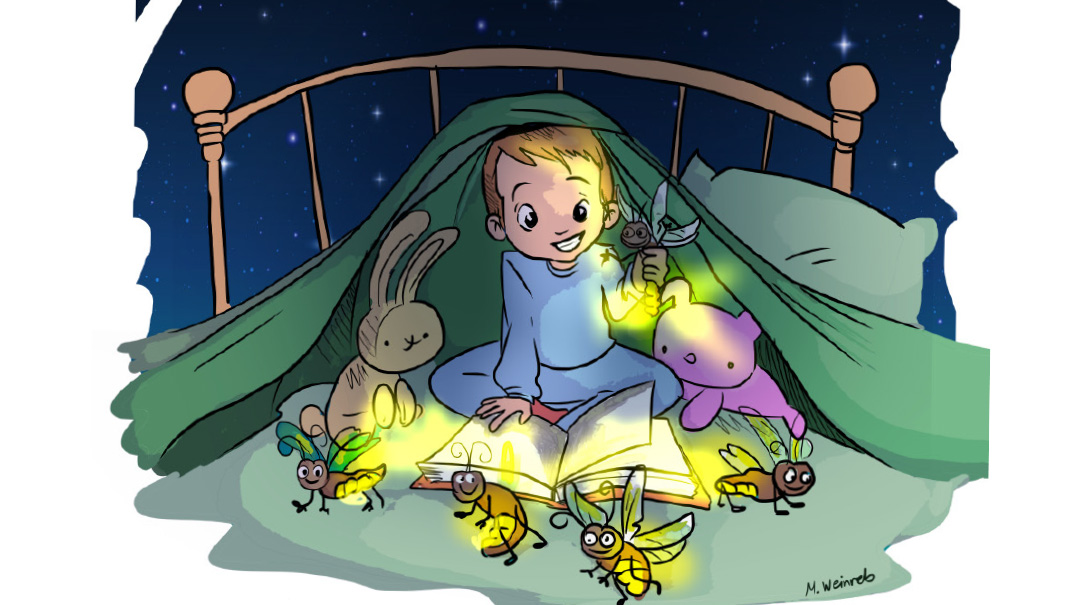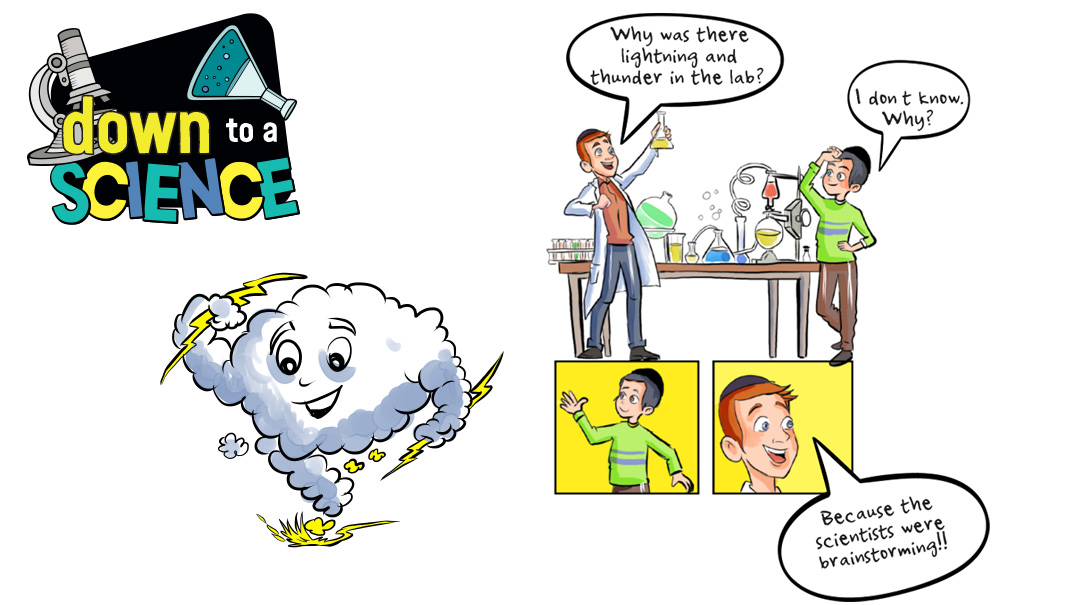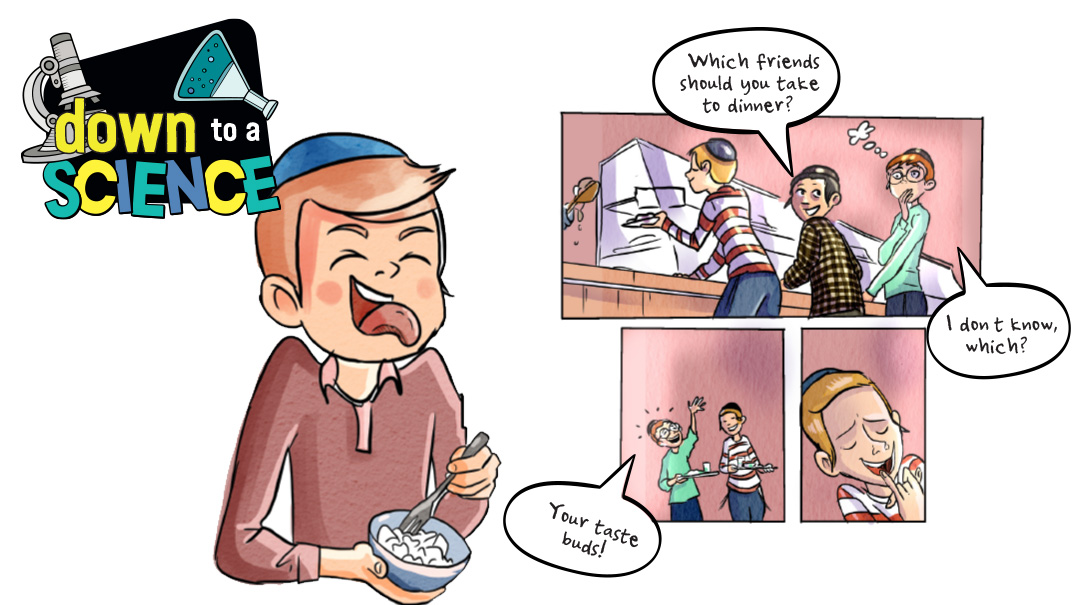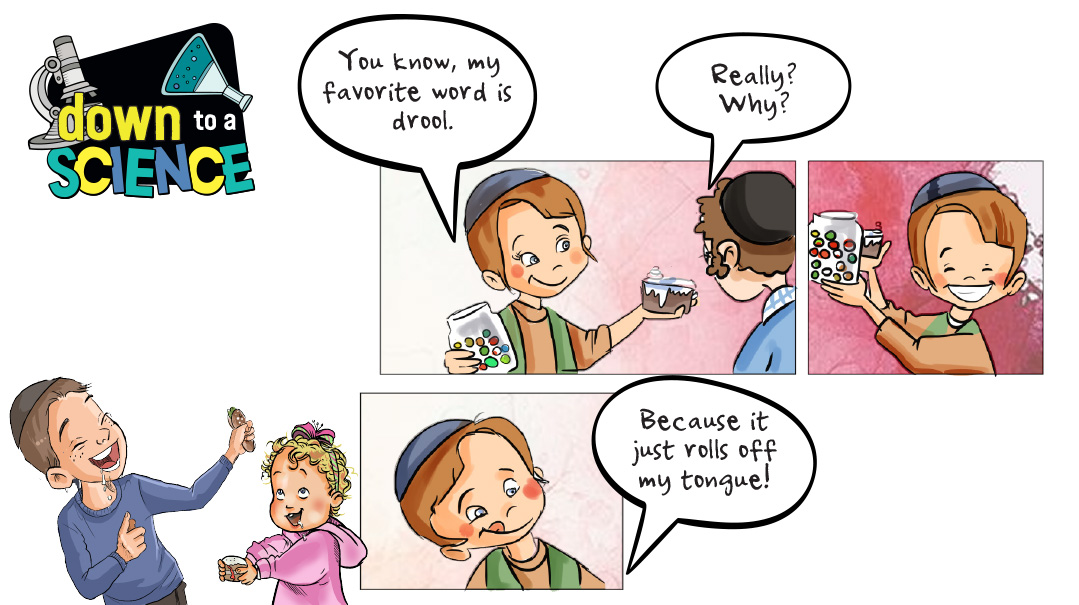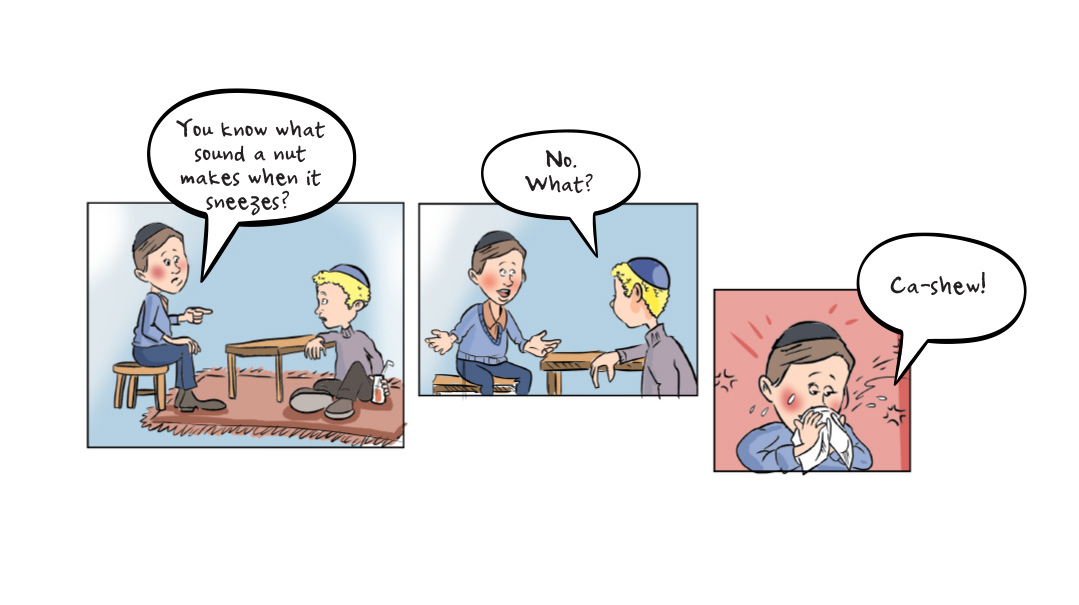What Are Freckles?

To understand freckles, we need to learn a little bit about melanin
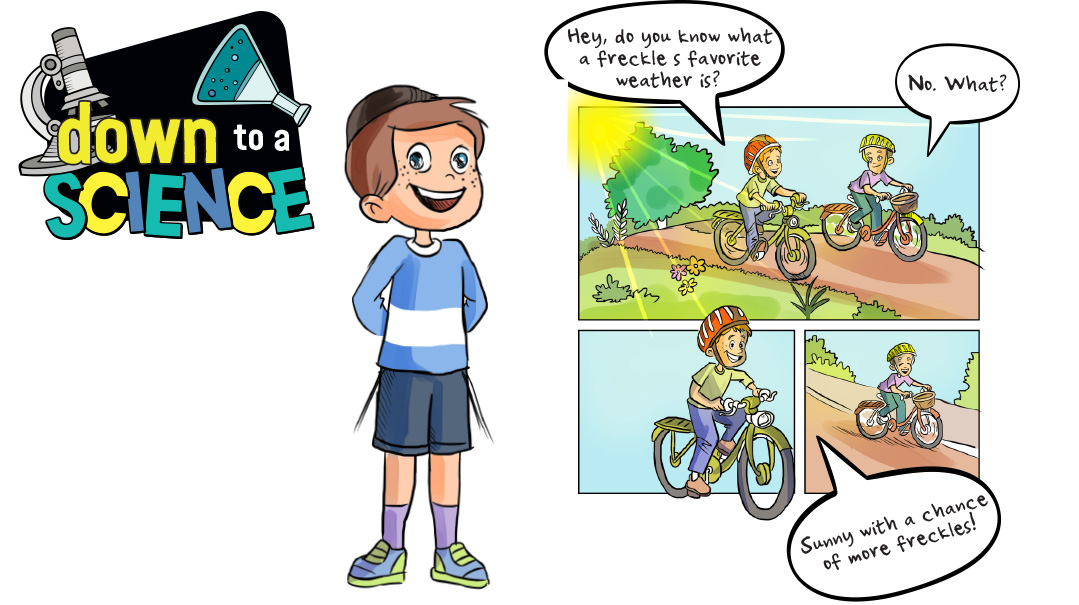
Hi, Kids,
This is Professor Mordy Maven, Thinker, Wonderer, and Figure-Outer of all things Science-ish. What that basically means is that I try really hard to figure out all the hard stuff, so you don’t have to!
Ah, there’s nothing like summertime. Every day is full of surprises! I must tell you about the surprise that happened when I met my friend Effy from England. We’ve been friends for a couple of years now, but I’ve only ever seen Effy when he flew in to visit his grandparents during midwinter vacation. He’s got red hair, green eyes and smooth white skin. And a great accent, too. I can’t forget that. But this year, when Effy flew in during the summer to visit, I just couldn’t believe my eyes. Same red hair. Same green eyes. Same piece of spinach stuck between his two front teeth. But his skin… it was polka-dotted!
Good friend that I am, I took my little finger and tried to rub them off. What do you know, they wouldn’t budge an inch. It seemed like those dots were actually attached to Effy’s skin and I thought that was incredibly interesting. Imagine being able to have patterns on your skin! Is this something they only do in England? I wondered, could this happen to me? Or might I become striped or checkered?
It turns out that Effy has a serious case of ephelides. Yup, you heard me. Ephelides. I know it sounds scary but don’t worry. Ephelides comes from ancient Greek and is translated to mean, “rough spots on the face.” But they aren’t rough at all. They’re actually smooth brown dots. You see, ephelides is actually just a fancy name for freckles.
But what exactly are freckles? Where do they come from and what causes them? Are they permanent?
To understand freckles, we need to learn a little bit about melanin. Melanin is a chemical produced by special skin cells called melanocytes. It’s what gives your skin its color, and the more you have of it, the darker your skin color is.
The job of melanin is to protect your skin from the sun. When your body feels that the sun’s UV rays are damaging your skin, it produces extra melanin to protect your skin. Imagine melanocytes like your mother standing at the edge of the pool with a gallon-sized tub of suntan lotion, calling, “You’re turning pink, Mordy. Come here so I can schmear you!”
For some of us, the release of extra melanin results in an even spread of brown color which we call a tan. You know, because it’s tan. Get it? Very light-skinned people, though, have less melanin. That means that when they are exposed to the sun, their skin cells hurry to make more melanin and those cells show up in small batches. Instead of getting a nice, evenly spread-out suntan, they get spotted with flat brown marks.
Have you ever seen a newborn baby with freckles? No, you haven’t! And now you know why. Because freckles are always a response to the sun’s UV rays. They don’t ever just happen on their own. In fact, freckles don’t usually appear until age two or three, because it takes that long to accumulate enough UV radiation to form them.
What decides whether you tan or freckle? Your genes, of course! Scientists have discovered a gene called MC1R which controls how much melanin you produce. If your MC1R gene is inactive, you’ll end up with a higher likelihood of getting freckles.
But that didn’t explain it all. I’ve known Effy for years and I never noticed these dots before! I’m a scientist and I notice everything! How could I have missed this?
I think you’ll all be relieved to hear that I didn’t miss anything at all. Shewww! It turns out that some people have freckles that completely fade away in the winter and only reappear in the summer, and other people have freckles that stay all year round.
The good news for Effy is that freckles aren’t dangerous, and they’re not a sign of any health problem. Also, in my humble opinion, they actually look pretty cool. I think it’s great that Effy has two different faces, one for winter and one for summer. Sadly, it seems that the spinach between his teeth is there year-round!
I hope that helped solve the mystery for you, kids. And with that, I’m on to my next quest!
Here are some fascinating facts about freckles that you might like to know:
Freckles is actually a slang word. It comes from Old Norse.
Some people like freckles so much that they use makeup to give themselves the look. There is also a new fad of applying henna freckles (fake freckles made using henna dye) that last for a few weeks!
Freckles and redheadedness are caused by the same MC1R gene, but not all redheads have freckles. Lots of them do though — about 80 percent!
In medieval times, freckles were considered witches’ marks. People believed that having freckles proved that the person was aligned with the devil.
(Originally featured in Mishpacha Jr., Issue 966)
Oops! We could not locate your form.

